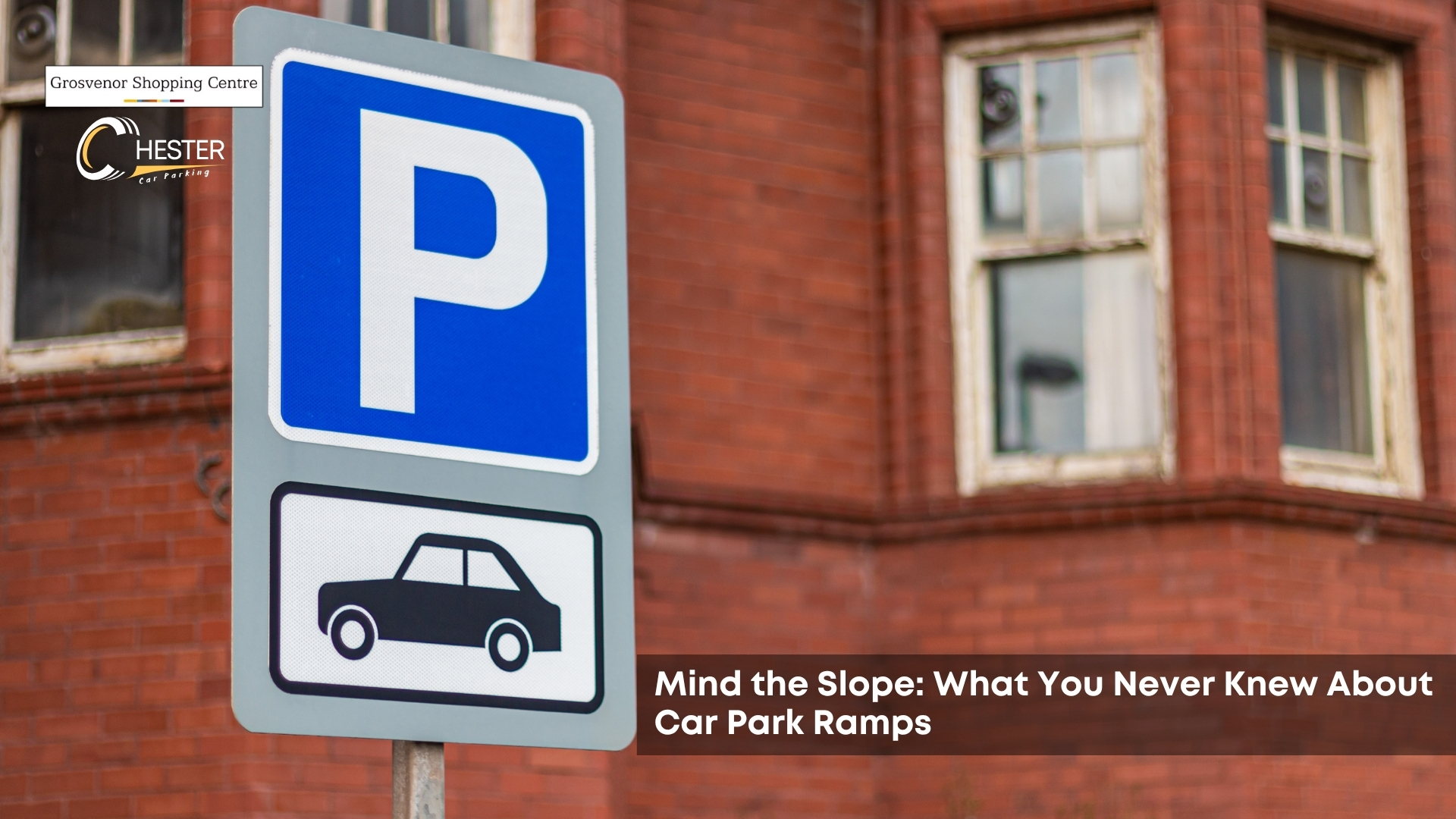Mind the Slope: What You Never Knew About Car Park Ramps
Car park ramps might not be something most drivers think about until they meet one that is too steep, too narrow, or just poorly planned. These everyday features play a bigger role than many realise, guiding traffic flow, saving space, and shaping the safety of car parks across the UK. Whether you are reversing into a tight multi-storey bay or gliding down into an underground level, the design and condition of that ramp can make all the difference.
At Car Parking Chester, we often see how good ramp planning can improve the entire parking experience, especially in areas with limited space. But before diving into design tips, safety advice, and smart features, let us start with the basics: what exactly are these ramps for, and why are they so important?
What Is a Car Park Ramp and Why Is It Used?
A car park ramp is a sloped passage that allows vehicles to move between different levels within a parking facility.
Car park ramps are essential in spaces where horizontal expansion is limited, such as city centres, residential blocks, and underground car parks. They allow for efficient movement between floors, especially in multi-storey structures and basement car park ramp designs. At Car Parking Chester, we work with a wide range of layouts, and ramps are always central to access planning. Once the purpose is clear, it is important to understand how the slope should be measured.
How Steep Should a Car Park Ramp Be?
A car park ramp should have a gradient between 1 in 10 and 1 in 6, depending on the type of car park and the vehicles using it.
This slope range helps strike a balance between safety and space-saving. A ramp that is too steep may be unsafe for some vehicles, while one that is too shallow requires more space. In modern car parking ramp design, engineers must also factor in how the slope connects to flat areas to avoid sharp transitions. For both public and private use, the right gradient can make the difference between a smooth or stressful parking experience. This leads to another key concern.
Are Car Park Ramps Safe for All Vehicles?
No, car park ramps are not always safe for all vehicles.
Vehicles with low ground clearance, such as sports cars, may scrape the surface if the ramp has a sharp incline or poor transition angles. On the other hand, taller vehicles, such as vans or those with roof boxes, may face clearance issues or struggle with tight turns. Well-designed car parking ramps take these vehicle variations into account. Businesses with frequent delivery traffic or car parks used by a wide mix of vehicles need to pay extra attention to safety. When safety is overlooked, serious issues can arise.
What Are the Risks of Poor Ramp Design?
Poor ramp design can lead to damage, delays, and accidents within a parking facility.
Sharp corners, sudden changes in slope, and poor surface grip can cause vehicles to slip or scrape, especially in wet weather. These risks are increased in underground or basement car park ramp design, where lighting and visibility may also be limited. A poorly placed car park ramp may also lead to congestion or make it more difficult for emergency vehicles to navigate through the area. To mitigate these risks, selecting the right building materials is essential.
What Materials Are Best for Car Park Ramps?
Concrete is the most widely used and effective material for car park ramps.
It provides durability, strength, and surface control when paired with textured finishes or anti-slip treatments. In high-traffic or exposed areas, additional surface solutions, such as rubber inserts or metal traction strips, may be used. Good drainage must also be incorporated into the surface design to prevent puddling and erosion. When paired with a smart car parking ramp design, materials can greatly enhance both safety and lifespan. Of course, material alone is not enough to keep users safe.
Can Slope Design Help Prevent Accidents?
Yes, thoughtful slope design can significantly lower the risk of accidents on a car park ramp.
Smooth, gradual inclines help prevent sudden braking, especially for inexperienced drivers. Clear signage, anti-slip coatings, and visual aids such as mirrors and markings further enhance safety. Car parking ramps with predictable curves and generous widths enable vehicles to pass without needing to make sharp turns or sudden stops. At Car Parking Chester, we design ramps with not just cars in mind but also how people move within the space. That brings us to another important group: pedestrians.
What About Pedestrian Safety on Car Park Ramps?
Pedestrian safety must be carefully planned when ramps are part of shared-use spaces.
Many older car parks have ramps that double as walkways, but this raises the risk of injury. Modern car parking ramp design includes barriers, marked crossings, or even separate paths to keep vehicles and foot traffic apart. Warning signs, lighting, and painted floor lines also help keep pedestrians aware of ramp traffic. These features are essential in locations such as retail centres or residential buildings where people regularly walk through car parks. Beyond people, another factor is the need for close control of water.
Do Car Park Ramps Affect Drainage and Water Build-Up?
Yes, car park ramps play a crucial role in directing water away from surfaces.
Because they are sloped, ramps naturally channel water either toward or away from drainage areas. If not designed properly, this can lead to standing water, algae, or freezing, all of which pose a safety risk. In the basement car park ramp design, this is even more critical, as trapped water can cause structural problems and flooding. Drain grates, side channels, and surface slopes must all work together to efficiently remove water. With the rise of technology, smarter solutions are also becoming more common.
Are There Smart or Automated Ramp Systems?
Yes, smart systems are increasingly being used to manage car park ramps more effectively.
Automated barriers, motion sensors, and light indicators help guide traffic and prevent blockages, especially in tight or single-lane ramps. Some systems include sensors for air quality, speed control, or clearance height detection. These features are particularly helpful in basements and multi-storey car parks, where space is tight, and visibility may be limited. For facilities looking to upgrade or replace entry systems, there are car park barriers for sale that integrate seamlessly with existing traffic management solutions. Additionally, smart ventilation and lighting systems work in conjunction with ramps to create a more comfortable environment. Still, even with these features, some drivers may find steep ramps hard to handle.
What Can You Do If You Struggle With a Steep Ramp?
If you struggle with steep ramps, it helps to drive slowly, keep your steering straight, and use a low gear.
Avoid turning your wheels before reaching flat ground, and refrain from braking harshly when going downhill. Be aware of your vehicle’s height and clearance, especially if it has been modified or equipped with roof equipment. If possible, choose car parks with wider or less steep car parking ramps, or ask staff for guidance. You can also check for parking deals that include access to more suitable facilities. These challenges are easier to manage when slope design is planned early in the process.
Should You Consider Slope Design for Your Home or Business Parking?
Yes, slope design should be part of every parking plan for homes and businesses.
Poor ramp layouts can restrict access, damage vehicles, or even violate local planning regulations. Whether you are installing a small private driveway ramp or managing a full basement car park ramp design, slope matters. At Car Parking Chester, we assist clients in designing car park ramps that are safe, functional, and fully compliant. For details on regulations and best practices, see our Additional info. When planned well, a simple slope becomes a long-term solution.


Leave a Reply